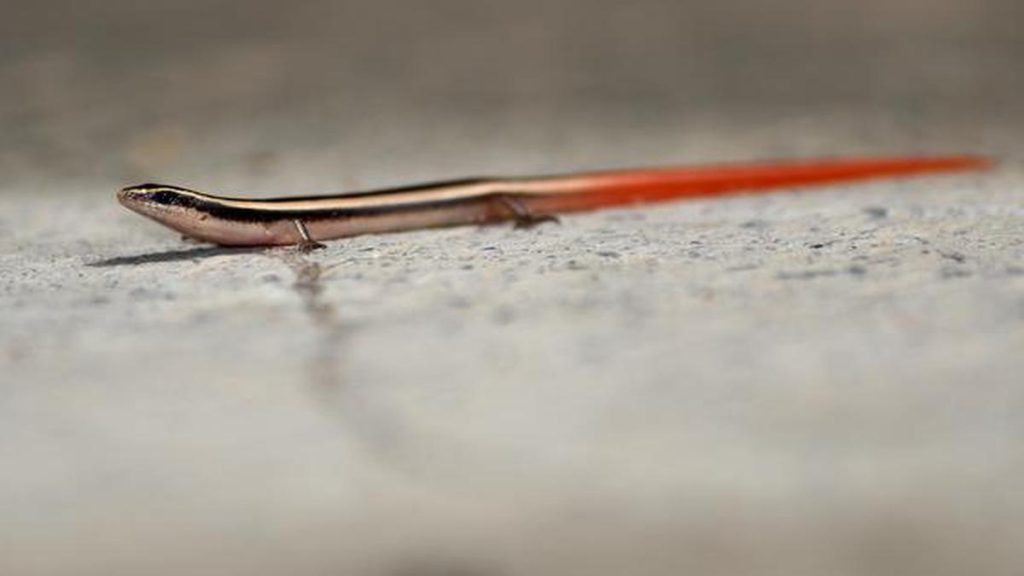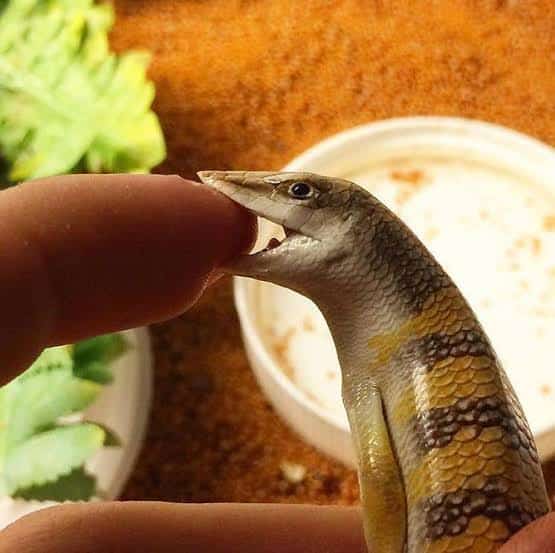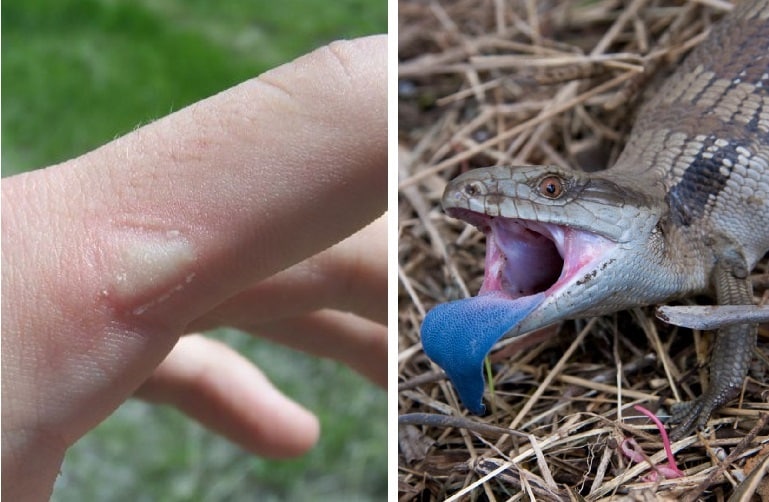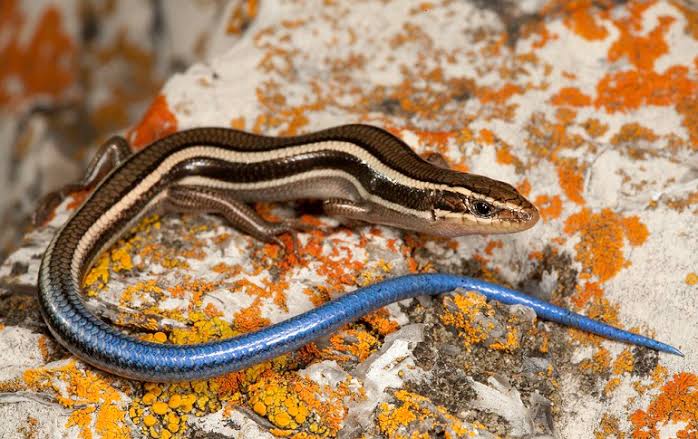10 Interesting Facts About Skinks
The animal kingdom is wider than the ocean, with amazing creatures whose characteristics and personalities will blow your mind. From their appearances to their unique personalities, animals have always been intriguing. Many are widely domesticated, while others are better left to explore their wildlife.
Have you ever wondered why reptiles are not popular as pets? Is it their bites or natural living necessities that make them unfit for the four walls of your home?
Coming to reptiles, you might have heard about Skinks. Forming the biggest family of lizards, Skinks have interesting characteristics that might blow your mind. We are here to learn all about skinks- their appearance, bites, and interesting facts.
Overview of Skinks
Skinks are considered the biggest family of lizards, making them widely popular in the reptile kingdom. As a part of the Scincidae family, there are more than 1,500 subspecies of Skinks, and many go unidentified to date. Skinks live underground or under caves of the land, making them rarely visible in the daily lives of human beings.
You probably might have never seen what a skink looks like, but we are here to create a clear image in your head about this family of lizards.
- Like lizards, Skinks also have a cylindrical body with a long tail.
- Skinks and Lizards have cone-shaped heads with tapering tails, giving them the true identity of reptiles.
- Most of the Skinks do not have legs, and the ones with legs are short.
- Their length keeps varying depending on the species. For instance, the prehensile-tailed skink is considered the largest, with around 72 cm in length.
- On average, Skinks are below 20 inches long.
- Their eyes show true features of adaptations as they shift to a transparent window-like scale. Studies show that skinks adapt to different colors to see and protect their eyes from obstacles when lying under burrows.
Origin and Appearance of Skinks

Now that you know how they look let’s see where they come from and where they are naturally found.
- Skinks are the kind of reptiles that are found in almost all parts of the globe. Studies indicate their origin in South Africa, but they are scattered everywhere today.
- They are said to be particular about their habitat, and you can find different species of skinks in different habitats.
- Some depend on vegetation, while others are found on land/soil.
- Skinks can survive in all types of ecosystems, from deserts and mountains to grassland, making it true that they have an adaptive nature.
- In addition, while most of their species prefer staying underground, others are aquatic, have a unique way of moving through plants, or stay for long hours (sometimes days) on rocks.
List of Interesting Facts About Skinks
Skinks have more than 1,500 species habituated in different parts of the world. Scientists are still trying to figure out their nature, personality, and characteristics, and they have come across some amazing and interesting facts about Skinks. Here are 10 facts about Skinks that will leave you amazed by this five-lined family of lizards
1. Solitary Living
A factor that all reptiles have in common is that they prefer to live their life alone, regardless of their long journey. Skinks also live their life in solitary, which is why you might have never encountered a skink. However, during May and June, Skinks find companions to mate with.
There are studies to prove that it is only during these months that Skinks seek companionship. They can prey on other Skinks if need be.
2. Colourful Splash
Reptiles are known for their capability to shift colors. Most species of Skinks are born with a unique metallic blue tail and brown body. As they grow older, the colors shift from metallic blue to a completely brown body. The five light-colored strips that run from head to tail make them different from lizards.
In addition, a characteristic you might have heard about chameleons- color shifts is also found in Skinks. Skinks under plants and trees can easily change their color to stay hidden.
3. Diurnal
Skinks are diurnal- they are active during the day and take rest at night. This is probably because skinks prey on insects such as crickets and flies.
In addition, skinks are sensitive to the weather as well. They often jump on rocks or trees to get sunlight and warm their bodies.
4. Espace Artists
Yes, you heard it right. Skinks are probably the finest escape artists in the lizard family. Let’s understand their escapism.
Skinks often fall prey to snakes or raccoons. To protect themselves, skinks can break off their tail and run off if a predator catches them by tail. This leaves the predator confused by the tail and allows enough time for skinks to escape. Their tail grows back over time while the predator is left distracted.
Additional Info- Their tail takes around six months- one year to grow back.
5. Endangered
Skinks population, although with 1,500 species, has been rapidly declining in many parts of the globe. Several reasons lead to skinks becoming extinct, including falling prey to predators, vehicles, and being sold in pet trades, which more often leads to killings for the skin.
Many countries have declared them endangered, including Ontario.
6. Found Everywhere
By now, you already know that Skinks have adaptive habitats, making them widely available in many parts of the world. They are in wide numbers in South Africa, Southeast Asia, and Australia. Their habitat is interesting because Skinks are found on every continent, with the only exception being Antarctica.
This is possible because their adaptability and sub-species have different characteristics to stay in any habitat.
For instance- Sand Skinks have scales on their toes that let them smoothly glide or swim below the sand’s surface.
7. Lizards that Look Like Snakes
In many parts of the world, Skinks are considered extremely dangerous and poisonous. One of the reasons is their appearance. Although several species of Skinks belong to the same Lizard family, they look like snakes.
Although skinks have limbs, unlike snakes, the long cylindrical body and no legs make them look like snakes or a crossover between snakes and lizards.
8. Carnivores
Every being in the animal kingdom on earth has a unique purpose they serve. Skinks are important as they help control the population of insects.
Many Skink species prey only on insects such as crickets, bugs, and flies. Some species also depend on plants, while others can eat reptiles, including snails and slugs.
9. Underground Habitat
Found in different ecosystems, most skink species prefer staying underground to protect themselves from predators. Years of staying underground have made them skilled in digging burrows, and in many places, scientists have found underground tunnels built by Skinks.
10. Reproduction
Before explaining their reproductive capabilities, you should understand what viviparous and oviparous means. The former refers to animals who give birth to fully live young, while the latter refers to those who lay eggs.
The species of skinks are both. Some are found laying eggs, while others can give birth.
Recent studies show that species of skinks are ovoviviparity, meaning they can develop eggs within their body and lay them out only when it’s time to hatch.
Do Skinks Bite?

Skinks belong to a family of lizards and are often found in gardens or backyards. What makes them dangerous or poisonous is not their characteristics but rather their appearance, which resembles snakes. Skinks find human beings as their enemies and are scared of us, making it hard to believe these timid species can be dangerous.
Before you give into myths about Skinks being dangerous, remember that they are tiny reptiles that are scared to death by human beings. That being said, yes, skinks bite.
Most of the Skink species are found to have around 40 small sharp teeth. While their teeth are the only weapon with Skinks, they are enough to clasp against the skin, which might lead to pain.
If you have ever seen a Skink bite, you would know how shallow and small their bites are.
Wondering how to protect yourself from Skin Bites? Look out for these signals in Skinks-
- Hissing
- Flattening their body
- Opening their mouth
- Puffing up
Additional Info– Skinks are not naturally wild or aggressive; in most cases, they bite only in self-defense and not attack.
Is the Bite Poisonous to Humans, Dogs, and Cats?
There is a common belief that Skinks are dangerous beings holding poisonous bites. However, the belief is largely based on the misconception of confusing Skinks with Snakes.
Skinks can bite, mostly in self-defense, but their bites are far from poisonous. They usually bite with their teeth that hold no strength and do not use their tongue. In any case, their bites are not poisonous.
Humans: What might be dangerous about their bites is that Skinks carry bacteria because of their natural living conditions. This bacteria comes with salmonella and parasites, which can be a mild threat to humans. The bacteria is particularly dangerous if it comes in contact with open wounds on human beings.
Coming to dogs and cats, there isn’t enough scientific evidence to prove that Skink bites are poisonous to them.
Dogs: Since dogs are naturally curious, they are likely to poke or eat skinks. This will not cause any lasting harm to dogs, as skinks do not carry venom in their body.
Cats: Cats are also not at a high risk. However, there are chances of gastrointestinal upsets because the bacteria puts cats more danger of getting a lasting infection than dogs.
Skinks come in different shapes. A bite of a small skink feels like a nip on your skin, and a bite of a bigger skink can break the skin, leaving nothing dangerous or long-lasting.
Tips to Avoid Skink Bites

Regardless of whether skink bites are dangerous/poisonous or not, you would want to protect yourself from them. The simplest way to avoid skink bites is to stay away from them and not poke them to invite any irritated attack.
Skinks bite only when they feel attacked or find prey that humans, dogs, and cats are not. Here’s a few simple steps that can help you avoid skink bites-
- Avoid going close to areas that have burials
- Do not touch Skinks
- Do not go near Skink Mouth
- Be careful around plants and trees
- Avoid walking on soil/sand without footwear
Skinks: Are They Good Pets?
There are about 1,500 species of Skinks with unique features and personalities. While reptiles are not the preferred kind of pets, they can make for good pets if you are wondering.
Not all Skink species can be domesticated, as many have habitats in forests or underground.
Berber Skinks are sun-loving skinks that can be a good option if you want to pet a skink. Skinks with blue tongues are not naturally dangerous or poisonous, so that you can be worry-free. Berber Skinks are under 20 cm, making them perfect for pets. However, if you want to keep Skinks as pets, you must give them extra care and a particular living environment.
Finding the right skink as a pet is not tough; you have to look for bright colors and active and small skinks. In addition, make sure that their skin is not loose as it indicates an unhealthy body.
Planning to get a skink as a pet? Here are all the health and general concerns that you will have to look out for
- Mouth Rot: Skinks are prone to mouth rot that appears as cheesy deposits around the mouth. This can be a serious condition of infection that must be taken care of.
- Diarrhea: Skinks require a special diet, and a lack of a balanced diet can lead to diarrhea. This can be also because of internal parasites that develop in their body.
- Metabolic diseases: Lack of Vitamin D and Calcium is often deadly for Skinks. If you find deformed or swollen limbs on their body, this indicates metabolic diseases that need immediate attention.
- Nails: Skinks grow long nails as a symbol of bodily infection. Overgrown nails also develop due to a lack of physical activity. Remember to visit the vet to trim your nails, as it requires special tools.
- Respiratory issues: Skinks are sensitive to weather, and you would not want them to live under extremely low temperatures or humidity weather conditions. A mucus around the mouth or nose indicates respiratory diseases in Skinks.
What is Toxic to Skinks?
Being a pet parent means that you should know all about your pet. Contrary to popular belief, Skinks are not poisonous and are under great threat due to toxins found in flowers, plants, and fruits. You must keep your skin protected from these-
Note– These plants, fruits, and flowers are toxic to skinks and can lead to extreme health conditions that might cause their death.
Summing Up
Skinks, a large part of the lizard family, is a unique reptile with interesting characteristics and personality. There are several myths and fictitious facts about skinks, including that they carry venom in their body. Skinks are timid and tiny reptiles with no toxins or venom in their body.
They are found all around the globe, and each of their species has developed a particular way of surviving under different living conditions- probably the most interesting aspect about Skinks.
Skinks are usually not domesticated, but some species can be welcomed in homes as pets. You only need a garden or backyard to offer skinks a natural living environment with adequate sunlight. If you bring a skink home, you will leave your guests in awe every time.

